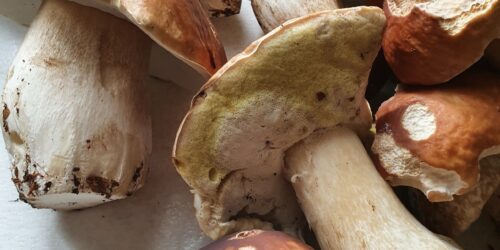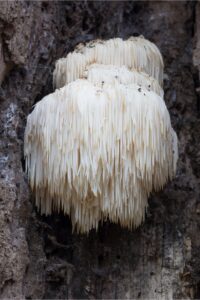Numerous studies determine that the polysaccharides present in mushrooms can influence the intestinal microbiota and they exert a prebiotic effect, in addition to influencing obesity, inflammatory bowel disease and cancer.
Mushrooms have been part of the human diet for thousands of years for their medicinal properties. Specifically, those belonging to the Ganoderma, Pleurotus, Boletus, Inonotus, Grifola and Armillaria genera have been used for their antiviral, antimicrobial, anti-inflammatory, hypocholesterolemic and antitumor activities, among others. However, the beneficial effect in maintaining the health consumers, such as prebiotics and food supplements, has been studied and demonstrated in recent decades.
They contain a variety of great interest compounds due to their high content of polysaccharides, proteins, vitamins, minerals, trace elements and antioxidants. It should be noted that the main bioactive components, those which promote the health functions of the organism, are located in the polysaccharide fractions, such as PSK. Numerous studies determine that the polysaccharides present in mushrooms can influence the intestinal microbiota depending on their structure and their solubility degree. The influence of mushrooms on the intestinal microbiota lies mainly in the fact that the polysaccharides are resistant to human digestive enzymes in the stomach and intestine. As a result, they can reach the colon and cecum as prebiotics, and therefore, they can be used as a source of energy being selectively fermented by the colonized microbiota in the gastrointestinal tract. In turn, certain specific metabolites are produced in this reaction, such as short-chain fatty acids (SCFA), which play a key role in the ability to activate cell signaling pathways involved in metabolic homeostasis and host immune response.
Specifically, the vast majority of mushroom polysaccharides are insoluble fibers (cellulose and lignin), and only a small part of them are β-glucans (beta-glucans), a bioactive compounds that form the cell wall structure of mushrooms and they are responsible for exerting powerful functions in the body. For example, they favor the multiplication of beneficial bacteria strains to the host of the Lactobacillus genus, which suggests that they have potential applications as prebiotics and dietary fiber. In this sense, they have activities such as immunomodulation, antitumor and anti-inflammatory action, cardiovascular protection, they play a role in obesity cases and they can regulate blood glucose. In addition, there is some scientific evidence that shows that they play an important role in improving learning and acting against memory deterioration. On the other hand, there are studies on beta-glucans in which their effect on allergy symptoms is related: rhinitis, conjunctivitis, itchy eyes and throat, etc.
While it is true that cultivated mushrooms can be available at any time and virtually anywhere, most wild mushrooms are only available during the fall months. And these ones contain the greatest benefits.
Mushrooms are a low-histamine food and, therefore, can be included from the first phase of the low-histamine diet. As we discussed in the “What substances can act as natural antihistamines?” article, specifically the Agaricus blazei Murill mushroom extract has antihistamine and antitumor functions. Although the therapeutic effect is achieved at high concentrations, it is interesting to include mushrooms in the diet. Some examples to include them could be a risotto, egg yolk scramble, textured soy or chicken with vegan cheese stuffed croquettes or even a mushroom soup.
Another of the most interesting and peculiar mushrooms is the Lion’s mane mushroom (left image). Its properties have encouraged many research groups to join in its study, as it has been related to the gut-brain axis connection and neurogenesis. Specifically, during this 2022 year we have carried out a clinical study with AD Dietsitas patients to evaluate the effect of this encapsulated fungus on the intestinal health of patients who have characteristic symptoms of DAO deficiency. We have followed up two intervention groups for 3 months in which they have been administered, in addition to a low-histamine diet, lion’s mane mushroom with Diamine Oxidase enzyme and in another group only Diamine Oxidase enzyme. All the participants have had different analytical parameters analyzed each month to study their evolution depending on the treatment received. The results are promising and we wish to publish them shortly.
If you want us to advise you in a personalized way, either in our Barcelona nutrition centre or by video conference from anywhere in the world, contact us and we will help you
Bibliography
Vamanu, E., Dinu, L. D., Pelinescu, D. R., & Gatea, F. (2021). Therapeutic Properties of Edible Mushrooms and Herbal Teas in Gut Microbiota Modulation. Microorganisms, 9(6), 1262. https://doi.org/10.3390/microorganisms9061262
Yin, C., Noratto, G. D., Fan, X., Chen, Z., Yao, F., Shi, D., & Gao, H. (2020). The Impact of Mushroom Polysaccharides on Gut Microbiota and Its Beneficial Effects to Host: A Review. Carbohydrate polymers, 250, 116942. https://doi.org/10.1016/j.carbpol.2020.116942
Ma, G., Du, H., Hu, Q., Yang, W., Pei, F., & Xiao, H. (2022). Health benefits of edible mushroom polysaccharides and associated gut microbiota regulation. Critical reviews in food science and nutrition, 62(24), 6646–6663.




